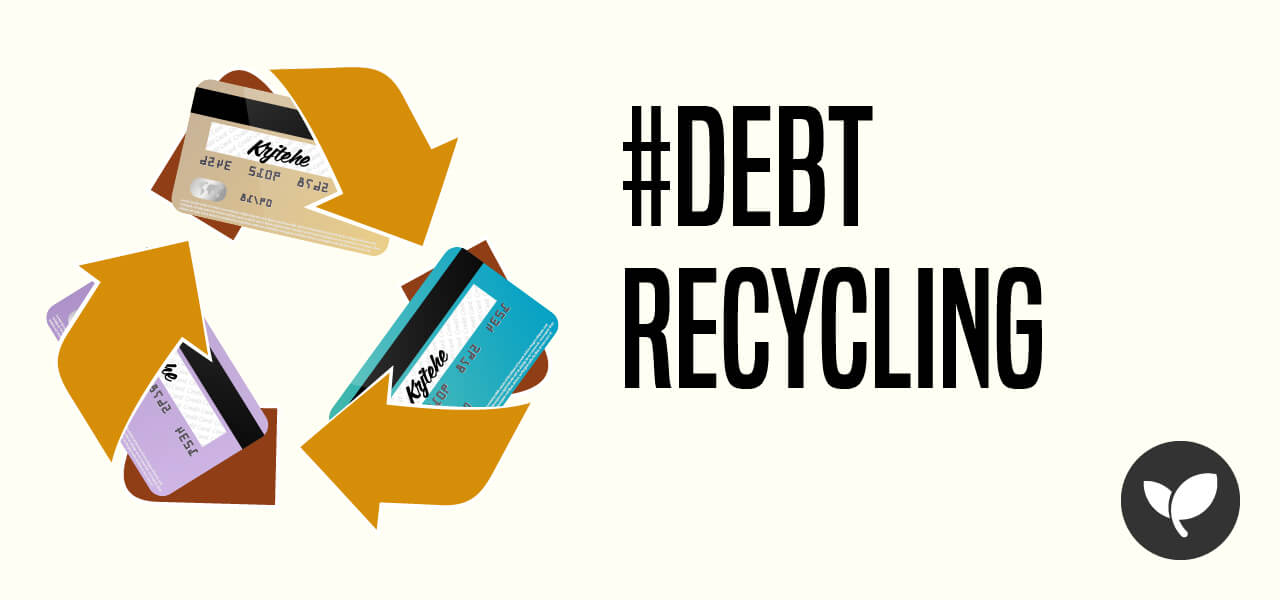Credit cards offer convenience and financial flexibility when used responsibly. However, if mismanaged, they can lead to a never-ending cycle of debt. One particularly harmful practice is debt recycling, where individuals use one credit card to pay off another, trapping themselves in a loop of increasing debt.
In this article, we explore the consequences of debt recycling, shed light on how it happens, and provide practical strategies to break free from this cycle and achieve financial freedom.
The Consequences of Debt Recycling
Debt recycling has severe repercussions on your financial well-being. Let’s examine the consequences that individuals often face.
Increased Debt Burden
Debt recycling compounds your debts, resulting in a higher overall debt burden. This mounting debt can lead to stress and limit your future financial growth.
Here’s how it works: Let’s say you have Credit Card A with a R 1 000.00 balance and Credit Card B with a R 500.00 balance. To make the payment on Credit Card A, you decide to use Credit Card B. As a result, the balance on Credit Card B increases to R 1 500 (initial balance + payment for Credit Card A). Now, you have created a cycle where you owe more money on Credit Card B and still have the original debt on Credit Card A.
Increased Interest Charges
Credit card debts come with high-interest rates, and when you recycle debt, interest charges accumulate on multiple cards simultaneously; this worsens the financial burden, making it more challenging to pay off the debts.
Here’s how it works: Credit cards typically come with high-interest rates, which are charged on any outstanding balances that you carry from month to month. If you only make the minimum payment each month the remaining balance will continue to grow interest charges. So, if you don’t pay off the full balance, the interest charges will be added to the outstanding amount. Therefore, in the next billing cycle, you will be charged interest on the original balance, as well as on the accumulated interest from the previous period.
Reduced Available Funds
Debt recycling significantly reduces the money available for everyday expenses or savings. As more income goes towards servicing multiple credit card debts, less money remains for essential needs or building a financial safety net.
Did you know that the average South African debt-to-income ratio is 62.6%? A moderate percentage is around 40%, while over 60% signifies over-indebtedness.
How Debt Recycling Happens
Debt recycling often begins innocently enough. But without careful planning and discipline, it can quickly spiral out of control. Here are common scenarios that lead to debt recycling.
Low (or No) Emergency Fund
- Without an adequate emergency fund, unexpected expenses strain your finances. Resorting to credit cards to cover these costs starts the pattern of debt recycling.
Overspending or Impulsive Purchases
- Living beyond your means creates a dangerous financial situation. Consistently spending more than your income can lead to credit card debt accumulation and the need to rely on other credit cards for repayment.
Lack of Budgeting and Financial Planning
- Failing to create a budget and track expenses can result in poor financial decision-making. Without a clear understanding of your income and expenses, it becomes easier to overspend and fall into the debt recycling trap.
Minimum Payments
- Paying only the minimum amount due on credit cards prolongs the repayment period and increases the overall interest paid. This practice continues the debt cycle, making it tempting to use other credit cards to meet ongoing expenses.
Breaking the Cycle of Debt Recycling
Escaping the cycle of debt recycling requires determination and a proactive approach to your finances. Here are essential strategies to break free from debt recycling and return to financial freedom.
Face Reality
- Acknowledge the impact of debt recycling and the potential long-term consequences on your financial well-being. Take ownership of your financial situation and commit to making positive changes.
Create a Budget
- Develop a comprehensive monthly budget that includes all your income, expenses, and debt repayments. Allocate a specific amount toward paying off credit card debts and stick to the plan.
Prioritize Repayment
- Start with the card with the highest interest rate or the smallest balance, depending on your preferred repayment strategy. As you eliminate one debt at a time, you gain momentum.
Negotiate Lower Interest Rates
- Contact your bank and explore the possibility of negotiating lower interest rates. In some cases, they may be willing to work with you.
Click here to learn about negotiating with your creditors.
Consider Debt Review
- If managing multiple credit cards becomes overwhelming, explore debt review options. Through this process, your debt is consolidated into a single loan repayment, giving you a practical solution to your debt.
Learn more about consolidating your debt with DebtSafe here.
Change Spending Habits
- Evaluate your spending habits and identify areas where you can make adjustments. Prioritize needs over wants and practice mindful spending. By curbing unnecessary expenses, you can free up more funds to allocate towards debt repayment.
Debt recycling is a harmful practice that can trap individuals in a never-ending debt cycle and financial stress. By understanding the consequences of debt recycling and implementing proactive strategies, you can break free from this cycle and regain control of your financial future. Remember, responsible credit card usage, disciplined debt management, and sound financial planning are crucial steps towards achieving lasting financial freedom.
